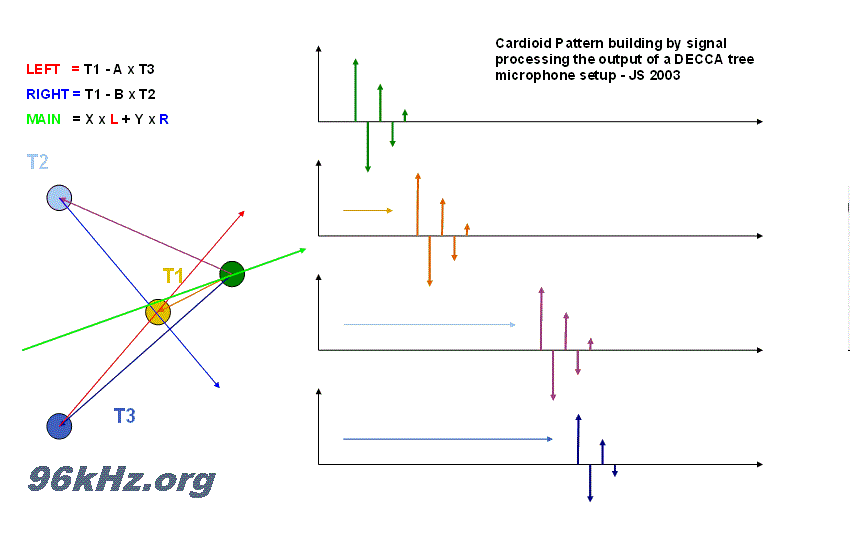| 96 kHz.org |
| Advanced Audio Recording |
The so callend "DECCA tree" is a common microphone setup to do orchestra recordings, because it offers both a suitable recording angle and good localization of the sound sources. It typically consists of 3 microphones with omni characteristics. When playing with various setups and microphone patterns, I once had the idea to use them to create a far field focussing system by emulating hyper cardioid patterns, based on mathematical signal processing. cardioid pattern emulation
the "decca cardioid" setup A cardioid pattern is generated by interference of two audio waves have a significant delay caused by the length of the acoustical path. A diaphragm which is hit by a wave and its inverted phase from behind, will react according to the levels which finally is a matter of the angle. Waves from the front of the setup will run straight forward into the microphone and cause the highest possible impact. Waves from aside will more or less have no effect at all. This can be controlled using two diaphragms and mixing their analog output together in different ways. The same way, one can do this mathematically by recording two omni microphones and sum up the time delayed copy with the non time delayed original and various ways. It is possible to localize and focus a distnt sound source perfectly in phase and amplitude and suppress side signals effectively. A standard setup should be to simply direct the main axis of the decca into the direction of the sound source and use the commond equation for cardioid M = A - B/2 oder a hyper cardioid like M = A * 0,866B. Any ratio is possible. But variation of the time delay and levels, a moving object can be followed precisely
Conclusion and Summary A microphone setup to the known DECCA tree can be used in inverted way to record a sound source in a far distance precisely. For a high precision, more than 3 microphones can be used to create an effective beam forming structure.
See here another application of the decca tree for sound source localization
|
| © 2003 - Dipl.-Ing. Jürgen Schuhmacher |
